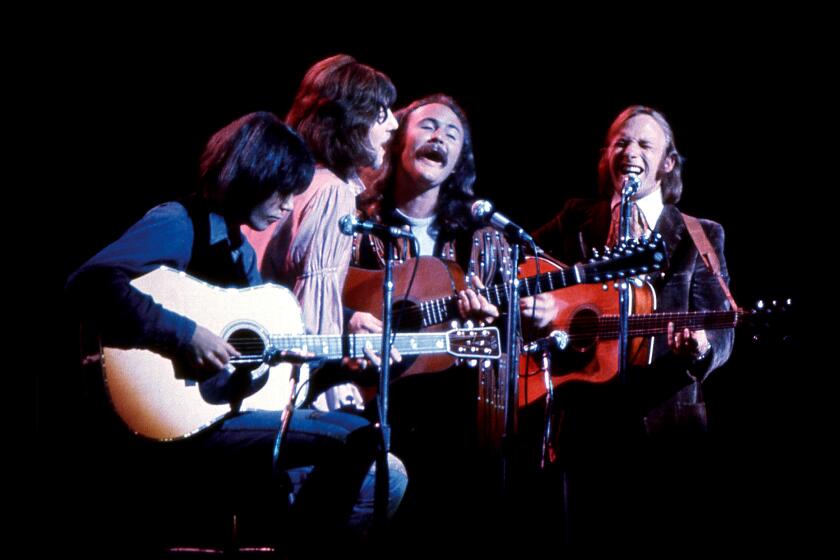O.C. MUSIC REVIEW : Mozart Gets a Crushing : Enrique Diemecke didn’t try to justify the odd Pacific Symphony bill that dropped an elegant concerto between Wagner and Strauss.
- Share via
COSTA MESA — If the idea is to crush Mozart, there probably isn’t a better way than to sandwich him between Wagner and Strauss. Well, someone out there may have a brighter idea, but please don’t send it in.
Luckless Enrique Diemecke inherited exactly that kind of programming when he led the Pacific Symphony on Wednesday at the Orange County Performing Arts Center.
The orchestra’s music director, Carl St.Clair--out of harm’s way by conducting the New York Philharmonic in the Big Apple this week--had put Mozart’s slender Violin Concerto No. 3 between the electrifying “Ride of the Valkyries” from Wagner’s “Die Walkure” and Richard Strauss’ massive, edifying philosophical tone poem “Also sprach Zarathustra.”
This combination may have been a daring, experimental, overreaching, foolhardy first. Maybe St.Clair had an ace up his sleeve. Diemecke, music director of the National Symphony Orchestra of Mexico and the Flint (Mich.) Symphony, didn’t.
He bravely tackled the obstacles, kept any objections he might have had to himself and faced the wild contrasts in period and style without justifying them. For that matter, he didn’t illuminate the pieces individually, either.
*
His genial if not always precise soloist in the Mozart Concerto was Benny Kim. Playing a lustrous 1732 Stradivarius known as the “Ex-Radziwill,” Kim elicited a lyric, unassertive voice without decisive rhythm or incisive attack.
Kim allowed himself great latitude in stretching out the main theme of the Adagio movement and later ventured into odd introspection in the minor episode of that movement. Diemecke worked hard to follow him there. The soloist also played his own cadenzas, which owed more to the 19th than to the 18th Century.
A scaled-back orchestra of about 50 musicians, most of whom were used only in the tutti sections, provided accompaniment. The big forces--nearly 100 musicians filled the Segerstrom Hall stage--were reserved for Wagner and Strauss.
*
Although he conducted “Zarathustra” from memory, Diemecke showed no mastery of its main thoroughfares or meandering byways. He could make short passages sweep and surge, but without herding them toward a particular direction. He shed little light on the quieter passages.
In his defense, his directions did not always produce noticeable results. The orchestra made a mighty noise in the big crescendos but elsewhere played with less confident profile. The music often sounded unfocused and hectic, replete with extravagant contrasts.
Armen Anassian, a Pasadena-based violinist who is second in the line of guest concertmasters being considered to fill the post that Endre Granat vacated in July, played the prominent solo passages with overly aggressive fervor.
In lieu of a pipe organ, which the building lacks, the orchestra relied upon a Yamaha synthesizer that used digital sampling of real organs, according to a spokesman for the orchestra. This description may not be technically up to par; neither was the sound, muffled and paltry in the afterglow of the piece’s overwhelming opening.
The program started with a scruffy, heavy account of the flashy Valkyries’ ride.
More to Read
The biggest entertainment stories
Get our big stories about Hollywood, film, television, music, arts, culture and more right in your inbox as soon as they publish.
You may occasionally receive promotional content from the Los Angeles Times.










